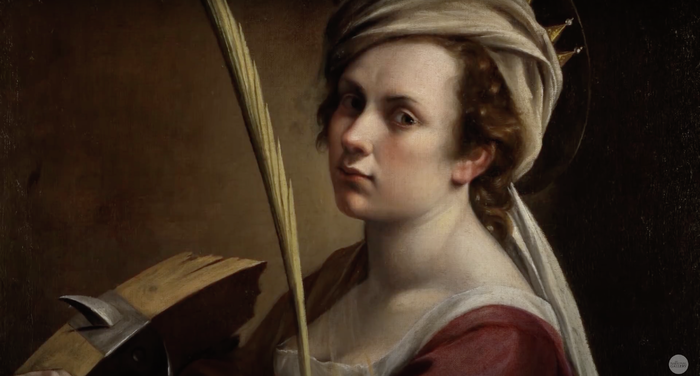‘WE ARE HERE’: How art shows us where we belong
Ellie Arden speaks to Prerona Prasad about curating the latest exhibition at the Heong Gallery, the politics of college art collections and women in Cambridge

The latest exhibition at Cambridge’s most innovative college art space - the Heong Gallery at Downing - "captures the transformational power of art and its ability to say 'You are here. You belong’", says the show’s curator Prerona Prasad.
“We live in and around art all the time, with very different kinds depending on the college”
WE ARE HERE includes work ranging from 18th century portraits to performance art, all in relation to 40 years of women at the University. The exhibition celebrates and questions the representation of female artists in colleges. “It's not an unequivocal sort of celebration; the fact that it's only 40 years since women came to Downing or only 48 since colleges started to accept women is actually quite anachronistic and in some ways quite a difficult history,” Prerona tells me. “I wanted to see how we could reflect on that. We always look outwards with our exhibitions, bringing in national and international artists, but I wanted to look inwards and look at the resources from the art collections that we have in Cambridge and how they represent women.”
The art on the walls of our public spaces reflects institutional values. At Oxbridge colleges, "we live in and around art all the time, with very different kinds depending on the college. Art is a huge part of our daily environment. Colleges are not just workplaces for students; they're home for half the year”. In Prerona’s view, the lack of women on the walls of some college dining halls or chapels "is like only having pictures of fathers and grandfathers and brothers and saying 'there were no women of note in this family, so we don't have any pictures of them up.'"
“It's good for men to be brought up around images of women and be reminded of women's achievements”
Prerona admires the lack of portraits in the dining hall at Murray Edwards, which have been replaced by "extremely challenging works of art by leading women artists" from the famous New Hall collection - one of the world’s largest and most significant collections of contemporary art by women. Prerona is firmly in favour of this choice: “I think that’s so much more intellectually stimulating and visually stimulating than having moribund, stiff portraits of academics.” WE ARE HERE highlights the fact that the hanging of portraits in dining halls has only been an established tradition since the 19th century.
Prerona views the strong female presence in Girton’s art collection as beneficial for the college’s male community: "it's good for men to be brought up around images of women and be reminded of women's achievements, their lives, their contributions, their struggles, because in the wider world you don't see that so much. The wider world is still very much designed for men, driven by male institutions and systems.”
Since the beginning of lock-down, the exhibition has moved online to a blog with artist interviews and ideas for creative responses to the works. Prerona notes that Covid-19 is creating new challenges for galleries around the world: “there are ways of communicating exhibitions online, which a lot of museums and galleries haven't had the time or the capacity to do. Lots of these institutions are dusting off their websites now. There's a lot of interesting activity happening.”
The Heong Gallery has often worked to display artists from historically marginalised groups, including those from outside of Western canon, in order to move beyond the boundaries of traditional college art collections. "One of my favourite exhibitions to have worked on was called 'When the Heavens Meet the Earth,'” Prerona tells me. “The exhibition had 28 artists from 13 different countries in it. There was a photograph, a self-portrait of Rotimi Fani-Kayode in the collection, and we realised that his father had been a student at Downing when he was studying law. This is something that we found out through the exhibition. Of course, the show was relevant in all sorts of ways, but we could never have thought that there would be this kind of very direct, concrete connection to one of the artists that we were showing.”
WE ARE HERE reveals how art affects our sense of belonging in spaces which often feel ostracising. “If we are to be confronted by images in our shared spaces, perhaps it's no bad thing to be able to have a say in what those images are'', says Prerona. “Colleges cannot forget their histories, but they must draw their life force from those who call them home now, and those who will come in the future.”
WE ARE HERE will be showing at the Heong Gallery for an extended period, hopefully allowing for visitors next term.
 Comment / Cambridge students are too opinionated 21 April 2025
Comment / Cambridge students are too opinionated 21 April 2025 Comment / Cambridge’s tourism risks commodifying students18 April 2025
Comment / Cambridge’s tourism risks commodifying students18 April 2025 News / Cambridge researchers build tool to predict cancer treatment success19 April 2025
News / Cambridge researchers build tool to predict cancer treatment success19 April 2025 Interviews / Meet the Chaplain who’s working to make Cambridge a university of sanctuary for refugees20 April 2025
Interviews / Meet the Chaplain who’s working to make Cambridge a university of sanctuary for refugees20 April 2025 News / News in brief: campaigning and drinking20 April 2025
News / News in brief: campaigning and drinking20 April 2025



